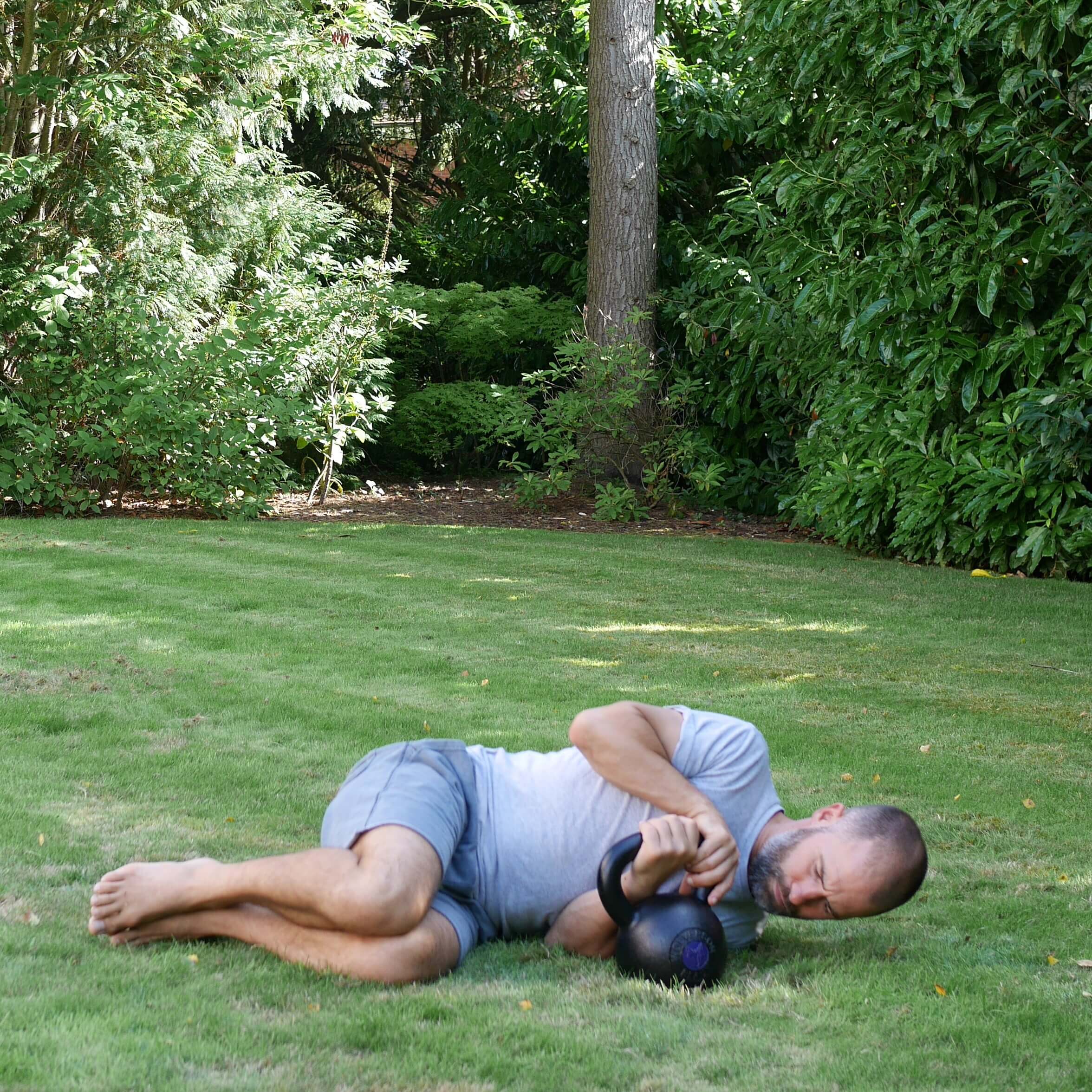Turkish Get Up Tutorial
“There’s no value in how heavy or how quickly you can do something, if you’re doing it all with poor technique”
If the Swing were the yang of the kettlebell universe the Turkish Get would be the Yin.
The slow controlled movement of the Turkish Get Up is the perfect compliment to the explosive swing
The Turkish Get up (TGU) is one of the most universal exercises I can think of. It’s perfect for the teenage MMA fighter who doesn’t want to get pinned on the mat while toughening his shoulders. It’s even more useful for the 80 year old who needs to learn to get off the floor if he or she falls over. It will build mobility, balance, coordination and strength through the whole body.
Leading physical therapist Grey Cook even uses the TGU as a movement assessment. If one of his top level athletes fail to perform a section well it’s an issue that needs correcting.
To start using this exercise and learn correct form you can watch my video tutorial or follow the description below.
1. Floor Press
Place a kettlebell on the floor and lay to the right side of it. The kettlebell should be around the same line as your chest.
Tuck your knees in towards your chest and roll on your side like a baby towards the kettlebell.
Feed your left hand through the handle and place the opposite hand on top of the handle. You want to make sure that the handle is sitting as low down the palm as possible with your forearm being firmly in contact with the bell. This hand position helps to keep your left wrist straight.
Roll onto your back with the kettlebell on your chest.
Your left upper arm should be glued in to your ribs with the elbow and shoulder blade moving down towards your hip. Forearm is vertical, grip the kettlebell tightly.
Take a deep breath in to prepare. On the exhalation push the forearm straight up in the air to get the kettlebell up.
Here your elbow should be locked, shoulder still packed with elbow pointing to the hip.
The right knee bent with foot planted on the floor. The left leg is out straight with legs angled at 5 and 7 O-clock.
Right hand should be above the right shoulder and stay there. From this point imagine that the right arm is like an iron bar. It doesn’t bend.
Place the left hand on your hip and check the left elbow is in contact with the floor. Keep the elbow fixed as if a nail has fastened to the floor. Then taking the left hand away from your hip and keeping your elbow fixed still, straighten your arm from the elbow joint.
2. Rolling 45
From the floor press, roll, lift and pivot up onto your left elbow keeping your right hand above the shoulder and eyes fixed on that right hand.
This movement should be explosive with the drive coming from your right foot and midsection. The key is to stay relaxed in the hips so no power is lost by the hips acting like breaks.
Keep a straight spine, with shoulder blades drawing down your back and chest open.
3. Tall Sit
From the rolling 45 feel the left heal of your palm in contact with the floor. Sit up tall, opening the chest and gently corkscrewing the left arm so that it ends up straight and working as support.
Carefully reposition the left hand for better support if you need to.
Keep the Kettlebell above your shoulder, remember your arm is an iron bar and eyes should still be fixed on the kettlebell.
Your right foot should be flat and have good contact with the floor with knee directly up above the foot.
4. Bridge
From the tall sit position and keeping eyes fixed on the kettlebell, push the right foot down and drive the hips up into the air. Keep the spine long and strong with chest open and shoulders packed into the body. Feel the line of support running from the kettlebell down though into the left palm. The kettlebell should be balancing rather than using too much muscular effort to stay in the air.
5. Sweep
Keep the bridge high so you have room to sweep your left knee under your left hip. Left hand should be under your left shoulder and eyes never leaving the kettlebell. Maintain the line of support and balance running from the kettlebell to the left palm. The left knee acts as some extra support.
6. Kneeling Lunge
From the sweep hinge at the hips, slightly sticking your bottom out to the right, then straighten up so that you are in a kneeling position keeping the kettlebell above your shoulder turn your gaze from the kettlebell to look forward.
Check that your left toes are tucked under to help you with the stand-up section.
7. Stand Up
Drive both feet into the floor and focus on keeping the left arm straight with kettlebell above shoulder.
From the overhead standing position you move intothe “get down” by taking a reverse lunge backwards with the left foot and reversing the “get up” process.








